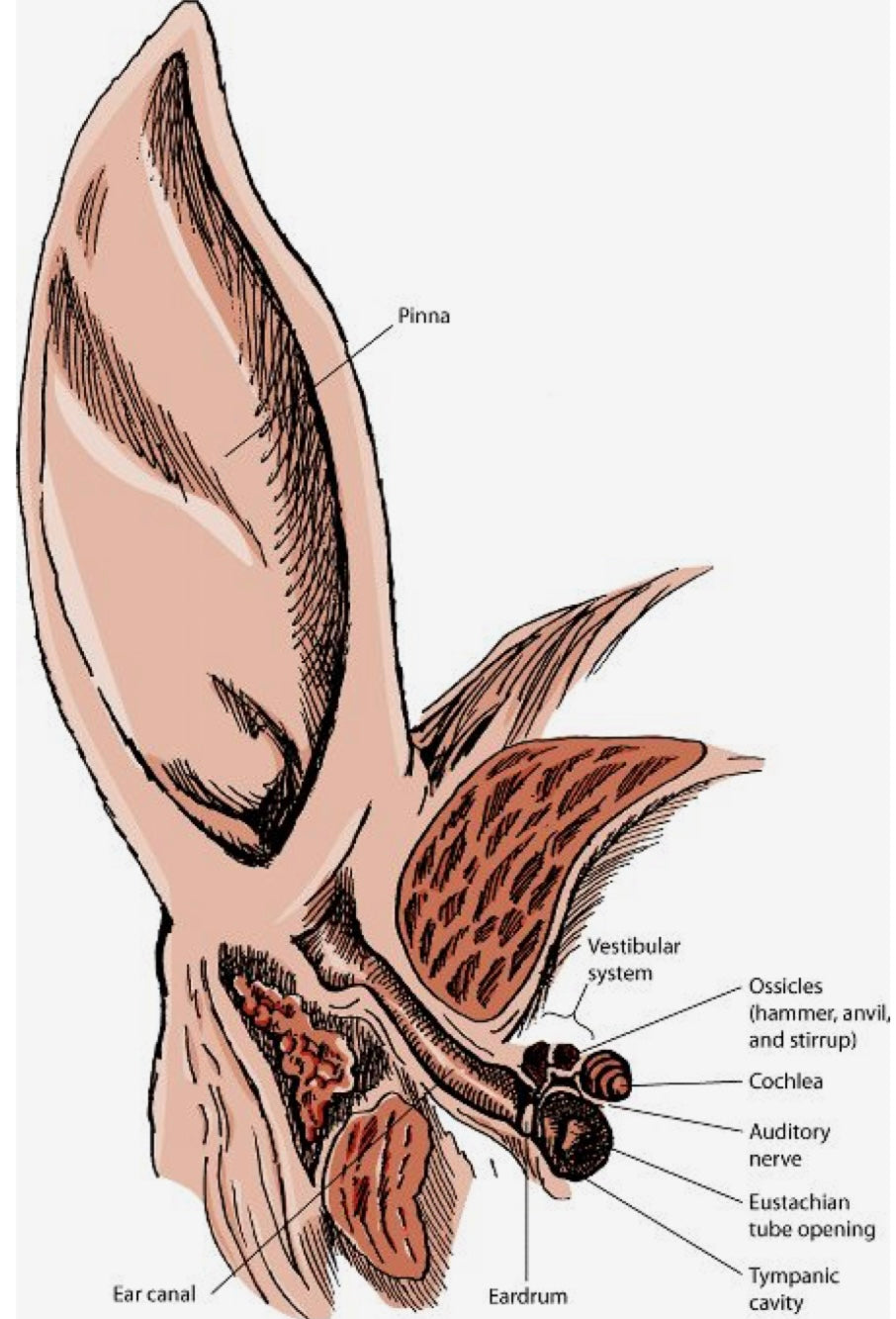What is one of the most important things that a horse uses?
Smell, touch, sight, taste, and hearing.
A horse can hear frequencies from 14Hz to 25Hz, a horse can rotate their ears 180degrees. While they are moving their ears, they are using up to 10 different muscles. Each ear can point in different directions. The direction the horse’s ear is pointing is the direction the sound is coming from. Always trust your horse in a situation when they hear a sound that isn’t right. They are a prey animal and have very strong instincts for their survival. As seen in the image the pinnae direct the sound to the inner ear where each ear can hear their own sound. The hair that is inside the ear protects it from bugs and debris. It also helps protect the ear from loud noises that happen suddenly. Where it acts as a buffer to the sound and decrees the sound. Many people clip out the inside of their horse’s ear for a certain look they’re going for. But their hairs are there for a reason and aren’t for beauty.
Many people think a horse can see 360 degrees, but it isn’t the case. Directly in front and directly in back at their tail is their blind spots. They almost have a perfect vision but not completely. They do in fact see colours not as many as the human eye. For example, red and yellow they cannot see. It will be a greenish-grey. As for 3D vision they do not see, all objects appear flat. When they head towards a jump and it is directly in front of them, they are relying on instinct and rider position. Objects need to be 6feet in front of them to completely see that so called object. With their incredible vision they are also capable seeing at night.
Horses have a strong nose where they can smell many different things. Certain smells can affect their attitude. Where the smell of a object stays in their brain for a long period of time. They can smell the molecules our body gives out when we are stressed or anxious. Horses can smell if their water or food is clean or not. When a horse curls its top lip they happen to have caught a pheromone scent in the vomeronasal organs so they may analyze it more closely. Certain smells of something will also prevent them from eating that item.
Whiskers on a horse helps them sense when objects are closer like electric fences or an example. Their brain contains certain cells where it receives information from the whiskers. Each time the horses’ whiskers touch something the nerves release off an electrical message to the brain to help them determine what they are touching. Due to horses not being able to see directly in front of them, this is where their whiskers come into play.
Horses have a very high sense of touch. Therefore, they can feel a fly land on their back. Their sense of touch is one of the most developed and important sense in a horse in terms of human contact. Many horses don’t like their nose, lips, mouth, and ears touched as much due to their other senses. They are very sensitive parts of the body. Their hair plays a very big role in their body where it acts as a protective shield and should not be shaved off.
Horses do have taste receptors that are like ours. They can distinguish between different flavours. Such as salty, sour, sweet and bitter flavours. These receptors are on the roof of their mouth and rear portion of their tongue. Therefore, they can lick pure salt without hesitation. With their sense of taste, they can tell the difference between poisonous and non-poisonous plants.
Horse’s need all these senses for survival. We have taken many of these senses away from these animals where they require the human for survival. By giving them back what they are born with you help the health of the horse and get more out of them. They are a animal and need to be treated a certain way where they can still be a animal at the end of the day.

